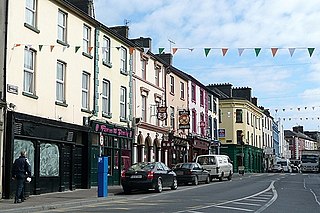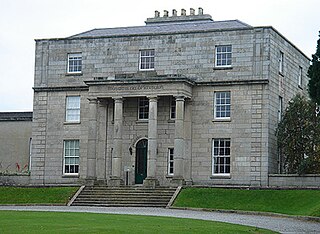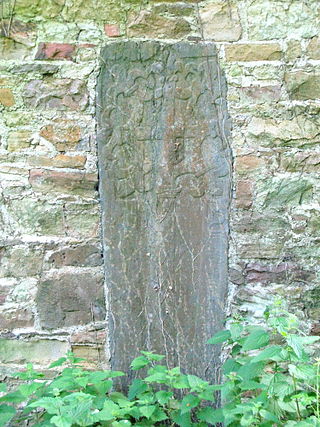
Clonmel is the county town and largest settlement of County Tipperary, Ireland. The town is noted in Irish history for its resistance to the Cromwellian army which sacked the towns of Drogheda and Wexford. With the exception of the townland of Suir Island, most of the borough is situated in the civil parish of "St Mary's" which is part of the ancient barony of Iffa and Offa East.
This is a list of people who have served as Lord Lieutenant of County Tipperary between 1831 and 1922.

Tipperary, commonly known as Tipperary Town, is a town and a civil parish in County Tipperary, Ireland. Its population was 4,979 at the 2016 census. It is also an ecclesiastical parish in the Roman Catholic Archdiocese of Cashel and Emly, and is in the historical barony of Clanwilliam. The town gave its name to County Tipperary.
Clonmel was a United Kingdom Parliament constituency in Ireland, returning one MP from 1801 to 1885. It was represented in Parliament when the Union of Great Britain and Ireland took effect on 1 January 1801.

John Philip Bagwell was an Irish businessman and politician.

Richard Moore PC was an Irish lawyer and judge.
Richard Bagwell was a historian of the Stuart and Tudor periods in Ireland, and a political commentator with strong Unionist convictions. He was the eldest son of John Bagwell, M.P. for Clonmel from 1857 to 1874. His son John Philip Bagwell followed the family tradition in politics becoming a Senator in the government of the Irish Free State in 1923.

Inislounaght Abbey, also referred to as Innislounaght, Inislounacht and De Surio, was a 12th-century Cistercian settlement on the river Suir, near Clonmel in County Tipperary, Ireland. It was originally dedicated to the Blessed Virgin.

Marlfield is a village three kilometres west of Clonmel, County Tipperary, Ireland. It is within the townlands of Marlfield and Inishlounaght. It replaced an older settlement named Abbey, which had developed near the 12th century Cistercian community of Inislounaght Abbey.
St. Patrick's Borstal Institution, Clonmel, was established in Ireland in 1906 as a place of detention for young male offenders aged between 16 and 21, and located in Clonmel, County Tipperary.
William Bagwell was an Irish Tory politician who served for more than twenty years as a Member of Parliament (MP) in the United Kingdom House of Commons.
John Bagwell, was a Member of Parliament (MP) for the County Tipperary in the Irish House of Commons and Colonel of the Tipperary Militia which he raised in 1793.
John Bagwell DL, JP was an Irish Liberal politician.

Moorstown Castle is a late 15th-century stone structure consisting of an enclosed circular keep near Clonmel, County Tipperary, Ireland.
John Bagwell may refer to:
Richard Hare Bagwell (1777-1826) was an Anglican priest in Ireland in the first quarter of the 19th century.

The Main Guard is a National Monument and former courthouse located in Clonmel, Ireland.
Marlfield Distillery was an Irish whiskey distillery which operated in the village of Marlfield, just outside of Clonmel, Ireland between approximately 1817 and 1856.
Lilla Minnie Perry was an Irish landscape painter.
Harriet Bagwell was an Irish philanthropist and promoter of local cottage industry.









